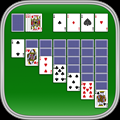‘Political, dynamic, and unapologetically brutal’: Early impressions of Dune Awakening

I stood there almost naked, staring across the desert the north as my hydration quickly dropped. I had no gear and no base and a huge expanse of worm-ridden desert to cross to continue the game. To keep going, I would have to start from nothing… again. Sighing deeply, I turned around and started picking up shrubs and bits of scrap metal to rebuild and attempt the crossing to the north again.
That’s my most memorable moment from my first hours of playing Funcom’s Dune Awakening and captures what makes the game really work.
Now, I’ve been a Dune fan since middle school, and I had high expectations and quite a few reservations. Could Funcom actually make a Dune game Dune enough?
I say it absolutely did. Dune Awakening is everything I expect from Dune – political, dynamic, and unapologetically brutal. The cardinal rules are simple and easy to understand but unforgiving and difficult to master: stay hydrated, stay off the open sand, and stay out of the sun. Each of those is easy to achieve well enough to survive, but to really thrive in the game… that’s where it gets interesting.
That intensity is my biggest criticism of the game. None of the systems is hard to maintain, but if you break your focus, calamity is sure to follow. It makes sense given the setting and the harsh world of Arrakis. But as someone who tends to do several things while playing games, I repeatedly got into bad situations because I turned to talk to my husband or went get a drink of water in the real world and returned to something bad happening while I thought I was in a safe space. It limits when I play to those moments when I can and want to give it all of my attention.
The setting
Dune Awakening doesn’t quite happen in the same world as the Dune books. In the introduction cinematic, Paul Atreides explains that he sees a new universe where his mother, Lady Jessica, obeyed the Bene Gesserit and had a girl instead of Paul. The video continues (using the word “because” entirely too many times) and sets the stage for the universe we’ll be playing in.
Honestly, the opening was a little confusing to me. I don’t know whether that was intentional or not, but I didn’t understand the relationship between this other universe Paul was talking about and the canon universe. Was I just a dream? Was any of this “real” or just Paul daydreaming? Maybe later the game will explain more, but I left this introduction with more of an “Uh, OK sure…” than an sense of investment in the framing of the story.
First steps
After the opening cinematic, we get dropped into another cinematic with a Reverend Mother of the Bene Gesserit that leads into the character creator. Character creation was fun, but more or less standard fare at this point, serviceable but nothing to write home about. You can make a vampire-looking individual for reasons that aren’t entirely clear to me.
After creating the look of your character, you jump back to the Reverend Mother to create your backstory: choosing your planet, social class, and starting abilities. You can pick from four “classes” to start, but they are just the abilities you start with; as you play, you can unlock all of the abilities from all classes, regardless of what you started with. Character creation ends with the Reverend Mother telling you to find the Fremen and Wake the Sleeper. Helpfully, she doesn’t tell you where to find the Fremen or what “Wake the Sleeper” means.
Then, predictably, your ship crashes into Arrakis because of course it does. A mysterious Fremen shows up to help you through a brief tutorial, and then you are off to become worm snacks and find your fortune. The shuttle crash felt cliche and a bit of a copout for an introduction. I think Funcom could have done a little bit more here to make it feel less canned.
Evolution, not revolution
If you’ve ever played a survival game before, you know the gist about what to expect at this point. Run around gathering everything you can touch, stabbing some other things, and building shelter while managing health, food, and water – all the usual suspects. But Dune Awakening evolves the model; the rules are simple and easy to understand, but immutable and unforgiving. This is where the game started to shine for me. Funcom took basic survival mechanics and zhuzhed them up. There’s nothing groundbreaking, just a refinement and polishing of tried-and-true survival systems that add a lot of depth and strategy to the game without being convoluted or obtuse.
From licking plants to purifying blood
You’re on a desert planet, so water is scarce (of course). You can keep yourself from dying of thirst by licking the dew drops off of some plants, but the dew can hydrate only up to a certain point, just enough to keep you from keeling over from dehydration. This is just surviving, not thriving. Thriving means getting more, and you even get some buffs when you are hydrated. But it’s hard to get that water and harder still to keep it. In other words, it’s easy to get enough water to survive but pretty difficult to get enough water to thrive. Around 10 hours in, I was finally starting to get a steady supply of water that doesn’t involve my licking random desert plants (seriously, how do you know something hasn’t peed on those recently?!),
Speaking of, where do you get most of your non-plant-licking water? Turns out everyone on Arrakis is also a vampire, and you get water from drinking the blood of your enemies. Roughly. You drain the blood of your enemies, and then take it back to your base and use a Blood Purifier to pull out the… red bits, I guess… and produce clean water. The game is mum on how the machine separates the soupy red bits from the freshwater goodness, so I’ll keep assuming that I’m a vampire, supping on the blood of my enemies. On a desert planet, with tons of sunlight. Don’t think about it too hard.
And don’t stare directly into the sun
Next, there’s the sun. Standing in the sun makes you overheat after a few seconds, and you’ll quickly get sunstroke (just as in real life). You lose water at an alarming rate when you have sunstroke, meaning that you find more victims to suck dry to feed your unholy thirst for definitely-not-blood. If you get too dehydrated, your health starts dropping until you get more water, so you do your best to stay out of the sun by staying in the shadows during the day. Then, when the sun goes down, it’s easier to get around because you don’t have the constant threat of sunstroke. As you progress and get better gear, you can stay in the sun longer and lose less water, but it’s still never a good idea to just hang out working on your tan.
The part that I found interesting and infuriating in equal parts is that the sun moves across the sky, and the shadows move too. So if you park yourself in a shadow and say, alt-tab to check out Reddit for a few minutes, you will alt-tab back to find yourself standing in the direct sun, with sunstroke, almost no hydration, and no purified blood or extra water.
The open sand
I did say it was easier to get around at night, but still not easy. You have to navigate the world by running from rocky island to rocky island and avoiding the open sand. Running on the open sand for more than a few seconds to a few minutes is guaranteed death by sandworm, regardless of whether it’s day or night.
As you run across the sand, you have a meter that shows your steps and impacts. Keep running long enough and you’ll hear a huge roar, the meter will turn red, and then you’re being hunted by a sandworm. The only way to survive is to get to the nearest rocky island in the sand where the worm can’t get you. You can’t distract the worm or dodge its attacks or anything. You either get to the rocky island or you get to visit the sandworm’s stomach.
Functionally, this means that while a destination might be only a couple hundred meters away across the sand, it ends up being a couple thousand meters because you have to run the long way around to stay on the rocky islands. If you try to run straight across — well, you can guess what happens.
To get out of the first zone, you have to craft a sandbike, which allows you to cross the sand much faster than you could on foot so that you can get further before a worm comes a-running to the dinner bell of you traipsing across the sands. But no matter how fast you are, the sandworm will always win, so you still need to get a rocky island ASAP or get chomped.
If you happen to get eaten by a worm, you lose everything that was on you. You can’t recover anything. Dying other places in the game means your corpse loot hangs around waiting for you to come back and pick it up. But these worms are greedy bastards and keep everything. So you really want to avoid being eaten by sandworms.
At the beginning, I mentioned that a mistake led to my being naked and resourceless in the middle of the desert. I misunderstood the directions and set off to the north on my sandbike. But I was farther west than I was supposed to be, and the next rocky island in the sand was farther north than if I had been a little bit to the east. So when I started my crossing and inevitably drew the attention of a sandworm, I failed to make it to a rocky island in time, and it ate me and I lost everything. Unfortunately, because I had been trying to move my base to the next zone, I also lost all my base equipment as well.
So I respawned into the world naked except for my underwear. Despite all the sand and many beach-like qualities of Arrakis, respawning in swim trunks doesn’t set you up for success.
Ultimately, my time in the game shows so far that it’s easy to play and difficult to master. This probably won’t be the last time I end up staring off across the desert in my underwear. Stay tuned.
Massively Overpowered skips scored reviews; they’re outdated in a genre whose games evolve daily. Instead, our veteran reporters immerse themselves in MMOs to present their experiences as hands-on articles, impressions pieces, and previews of games yet to come. First impressions matter, but MMOs change, so why shouldn’t our opinions?












